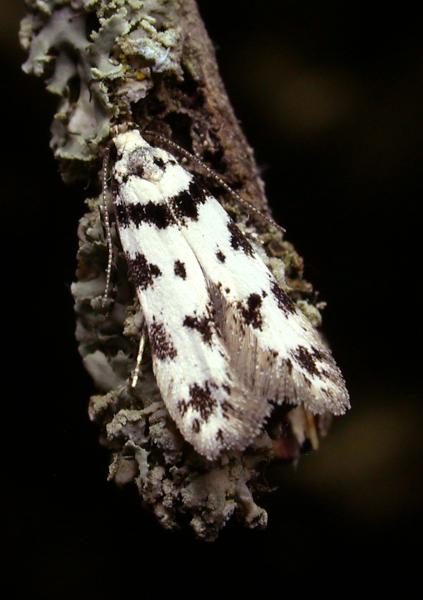35.152 Pseudotelphusa scalella (Scopoli, 1763)
Status and Distribution
A local to very local species of southern and central England. Has been recorded from a wood in Devon on several occasions but is otherwise unreported from south-west England. Apparently absent from northern England, Wales, Scotland, Isle of Man and the Channel Islands.

Provisional map
Foodplant and Larval Feeding Signs
Unknown in Britain, but in the late 1990s was found feeding on leaves of Quercus spp (oak) in Europe during late summer and autumn. The larva has been located in mosses on tree trunks which were formerly suggested as a possible foodplant. However this habit is now considered to be for pupation rather than as a foodplant.
Habitat
Deciduous woodland.
Finding the Moth
Larva: unknown in Britain. Suggested as most likely to feed on oak in Europe although the larva has been found in mosses on tree trunks where it is thought they may go to pupate.
Adult: rests on tree-trunks during the day and later comes to light where it has been trapped on one occasion in a light trap run at 14 metres up in the tree canopy.
Similar Species
An obvious white and black moth with markings unlikely to be confused with any other British species.
Single brooded from mid-May to early July.
Earliest: 29th April circa 1900 (VC12) - the day and month were given but the year has had to be approximated and this may refer to a bred moth.
Latest: 21st July 1984 (VC15)




